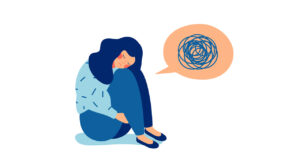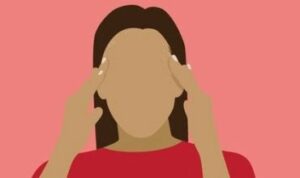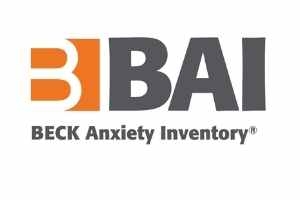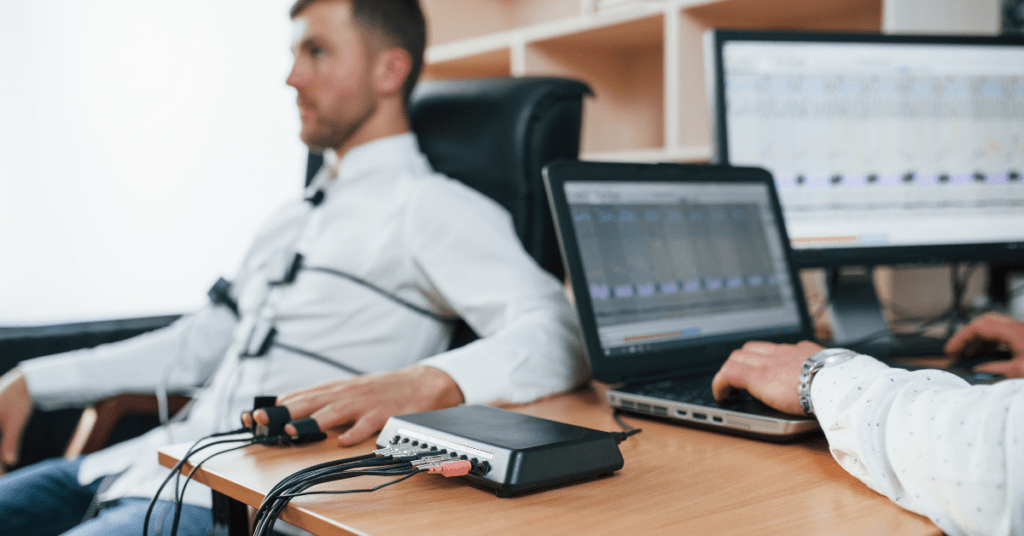Contents
What is Anxiety?

Anxiety is a feeling of worry, nervousness, or unease about something with an uncertain outcome. It is the subjectively unpleasant feelings of dread over anticipated events, such as the feeling of imminent death. Anxiety can be appropriate when dealing with a realistic threat, but it becomes problematic when followed by unnecessary worrying thoughts, persistent fear that interferes with daily functioning, the anticipation of unrealistically negative outcomes, or significant changes in emotional or behavioral reactions. There are some anxiety tests to know whether it is anxiety or not?
What is Anxiety test?
Anxiety Test measures your anxiety level based on how you interact with it. The idea is that if enough people use the system, we can get an accurate representation of what causes anxiety for most people. This means that anyone can check their anxiety level quickly and easily with just a few mouse clicks.
Anxiety tests are very useful tools and can give professionals a much clearer picture of the person’s concerns, abilities, and capacity for change. Many people who take these tests stumble upon surprising discoveries about themselves that they had not realized before; such as what areas of their lives that they need to improve in.
Different Types of Test
There are different types of Anxiety Tests such as:
Basic IQ Test

One of the most common types of anxiety tests conducted is a basic IQ test. Chances are you have taken one at least once in your lifetime. This test usually measures the ability and capacity to learn new things, process information, and solve problems under various conditions.
Minnesota Multiphasic Personality Inventory
These scales were devised more than 70 years ago and are currently in use all over the world in schools, clinics, behavior therapy centers, and mental health care facilities. The MMPI was based on Hathaway and McKinley’s work with the original Benham tests of the 1920s. It has been updated for standardization, criterion validity, and improved instrumentation. It is currently in its fourth edition (MMPI-4) which includes approximately 550 clinical scales.
The Hamilton Anxiety Rating Scale

The Hamilton Anxiety Rating Scale measures severity of symptoms and the overall impact on daily life. This test is a standard assessment tool for anxiety disorders. Mental health professionals use this to diagnose and classify different types of Anxiety Disorders.
Social Phobia Inventory(SPIN)
SPIN was a successful development by Dr. Antony in order to measure social phobia symptoms. It comprises 17 items which further divides into three subscales: The Cognitive Distortions, Social Interaction Anxiety, and Fear of Negative Evaluation scale. The test has been found to be effective both in children and adults. The SPIN is a self-reporting questionnaire designed to assess the tendency of an individual to experience anxiety, fear, or avoidance in social interactions.
Social phobia (social anxiety disorder) affects millions of people worldwide. It can be very debilitating and often goes undetected due to a lack of understanding about the condition among the general population. It was to provide mental health professionals with an accurate, reliable, and valid tool for assessing the severity of social phobia symptoms.
The test is available in two formats: A short form (17 items) that takes 5-10 minutes to complete, and a long-form (40 items).
Beck Anxiety Inventory (BAI)

The Beck Anxiety Inventory was created in 1988 by Dr. Aaron T. Beck and colleagues as a self-reporting questionnaire to measure the severity of anxiety symptoms. It is already in its second edition. The BAI is for adults, adolescents, and children over six years old. It is now available in many languages including French, Spanish and Portuguese. Dr. Beck and Dr. Steer introduced a modification of the BAI (BDI-II) in 1996 to make it easier for non-psychiatrists to use the test as an assessment tool since they do not have access to clinical training on mental disorders such as depression and anxiety.
Penn State Worry Questionnaire
Self-reported assessment measures the tendency to worry in people without a diagnosis of Generalized Anxiety Disorder (GAD). Meyer et al. designed this in 1990. It contains 14 items, seven relates to worrying thoughts or ruminations and seven to anxious feelings. The test has proven validity for use with adults aged 18-64 years old both clinically diagnosed with anxiety disorders but also anxiety sufferers who do not have any type of psychiatric disorder.
Generalized Anxiety Disorder Scale
Strain et al. developed the Generalized Anxiety Disorder Scale in 1993. It is to assess the level of anxiety symptoms among individuals with GAD. This is a 20-item self-assessment questionnaire based on the criteria for diagnosis. It also focuses on the physical and emotional symptoms that are common among GAD sufferers. It can be used as an outcome measure after treatment for GAD, allowing mental health professionals to monitor progress throughout treatment. There are two formats referred to as “version 1” or “version 2”, each has 10 items measuring somatic/physical manifestations of anxiety (e.g., heart pounding, shortness of breath) and 10 items measuring psychic/emotional manifestations (e.g, worry, tension).
Yale-Brown Obsessive-Compulsive Scale (YBOCS)

The Y-BOCS is a 10-item clinician-administered questionnaire that measures OCD symptoms. It was created by Goodman et al. in 1989 to assess the extent of obsessions and compulsions an individual has experienced. Respondents are asked how often they performed each activity during the last week according to six dimensions: time spent; interference; distress or anxiety; resistance; control; and pleasure or gratification. Higher scores indicate more severe symptoms. Adolescents and adults aged 13-89 years old, can use these who have obsessive-compulsive disorder (OCD).
Difference between Anxiety Tests
The Beck Anxiety Inventory was developed to assess the intensity of anxiety symptoms. The time frame being assessed for this questionnaire is limited to the last week. The survey involves 21 questions which are answered on a 4-point Likert scale ranging from 0 (not at all) to 3 (severely). Higher scores indicate more severe anxiety.
The Penn State Worry Questionnaire aims to measure the intensity of worry experienced over the past month rather than other aspects of psychopathology. It contains 24 items assessing different components of worry including broad concerns, concentration difficulties, and physical concerns/symptoms. There are four subscales in total each with 6 questions. These rates are 1 to 5 on a Likert scale. The subscales include general concerns, performance worries, post-mortem worries, and uncontrollability/certainty.
The Generalized Anxiety Disorder Scale contains 14 questions that assess the intensity of symptoms related to anxiety disorders such as worrying and tension during the last month. There are three different forms that correspond with specific DSM-IV diagnoses (generalized anxiety disorder only, panic attacks only, and multiple anxiety disorders). Each form has seven items rated from 0 (not at all) to 4 (severely), for a total score ranging from 0-28. Higher scores indicate greater severity of symptoms.
Zung Anxiety Scale consists of 20 questions designed to measure four aspects of anxiety. These include somatic symptoms, psychic anxiety, autonomic arousal, and avoidance. The time frame for assessment limits to the last week. Each item rates on a 4-point Likert scale ranging from 0 (not at all) to 3 (severely). The total score can range from 20-60 with higher scores indicating greater severity of symptoms.
Benefits of Anxiety Test

Anxiety tests are beneficial for identifying different types of anxiety disorders. It allows one to self-diagnose if worried about their mental health. It helps an individual understand their triggers for certain anxieties. These are specially for those who are treating their Anxiety Disorders.
Trials have shown that having patients complete a screening tool such as the ones mentioned above will reduce unnecessary doctor visits, which can help lower healthcare costs since not every condition requires medical attention.
When Do You Need These Tests?
These tests are a method to quickly measure your Anxiety Levels. You can use it to compare different situations or overtime. But only this is not the tool you use to determine if you have an anxiety disorder. Anxiety becomes a problem when it includes useless worry thoughts or persistent dread that prevents you from functioning normally. Anticipation of an unrealistically terrible result, as well as significant changes in emotional and behavioral responses, are other examples of anxiety.
Anxiety tests help to determine what kind of treatment would benefit the person the most. They can also help in diagnosing an illness or disorder that may be causing certain types of symptoms. For example, teenagers who experience severe anxiety and cannot focus on schoolwork may be having problems with ADHD. These tests do not conclude the ailment, there is a further investigation which a specialist performs.
Procedure of Anxiety Test
Firstly, the doctor examines that what type of anxiety test suits you. Then fill out the required information and assessing yourself. Once you have completed this you can email the results to a doctor or counselor. They will help them to review these with you.
What Happens After Anxiety Test?
When you will take the Anxiety Test, the doctor gives the results to mental health professionals, so that they can review and interpret the results. If they notice any red flags in your answers they may recommend further testing. These are an evaluation with either a psychologist, psychiatrist, neuropsychologist, or another mental health professional. They can give you more personalized follow-up care (depending on each individual’s state law). They will also give you some treatment options that may include an initial intake session. The doctor performs these tests either in person or on phone, depending on state laws.
Limitations of Anxiety Test
Some limitations of the anxiety tests mentioned are that they are not always able or appropriate for individuals to complete on their own. For example, only a professional can diagnose an individual with an anxiety disorder by using standardized criteria during clinical assessments. However, both patients and caregivers can benefit from completing these questionnaires.
Scoring can be difficult. The questions are based on subjective accounts. It means individuals could answer the questions differently depending upon how severe their symptoms are. Individuals who have acute anxiety/panic disorders may not be able to complete. This can be due to their inability to focus and concentrate on formulating answers. Also, some people do not like disclosing their personal information such as mental health history or severity of symptoms because they feel embarrassed or stigmatized so the validity is reduced when using self-report measures for the diagnosis of mental illnesses such as anxiety disorders or depression.
A Word From MantraCare
Your mental health — your psychological, emotional, and social well-being — has an impact on every aspect of your life. Positive mental health essentially allows you to effectively deal with life’s everyday challenges.
For more information, please contact MantraCare. Anxiety is a feeling of fear, worry, and unease often related to an upcoming event or uncertain outcome. If you have any queries regarding Online Anxiety Counseling experienced therapists at MantraCare can help: Book a trial Anxiety therapy session


